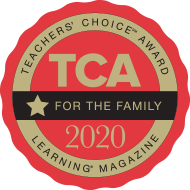Materials
- water table(s), large tubs, or plastic wading pool, if outside (limit the number of children at a water table or tub to four or five, or use multiple water tables and/or tubs)
- wide-mouthed bottle or vase
- cups, containers, sponges, bottles, basters, plastic tubes, funnels, plastic bags, etc.
Key Science Concepts
- Water takes the shape of its container.
- You can use lots of different objects to move water.
Vocabulary
Encourage children to use words related to water such as pour, flow, splash, drip, stir, squirt, spill, leak, and the names of objects for moving water like container, baster, tube, funnel, strainer, and colander, along with science process words such as observe, compare, same, different, change, test, and predict.
Directions
- Break children into small groups.
- Tell them that the goal of this activity is to find as many ways as they can to move water from a large container that’s at one end of the water table to a wide-mouthed bottle that’s at the other end. (If you’re using tubs instead of a water table, position the two tubs at different ends of a room. Better yet, do this activity outside to avoid spills.)
- The only rule is that children cannot pick up the water container. (A sample solution might be that they use a baster to carry water from the container to the bottle.)
- After each group has finished, ask them to figure out a way to move the water in the opposite direction, from the bottle to the container.
Reflect and Share
Have children demonstrate how they moved the water. Ask:
- Notice the openings of the containers and tools—what differences do you see? Are some wider than others?
- Which tools fit into the bottle opening? Which ones were too wide? What made moving water easier or harder?
- Did you spill any water while you were trying to move it? Which containers made it easy to spill? Why do you think that is?

 Español
Español








